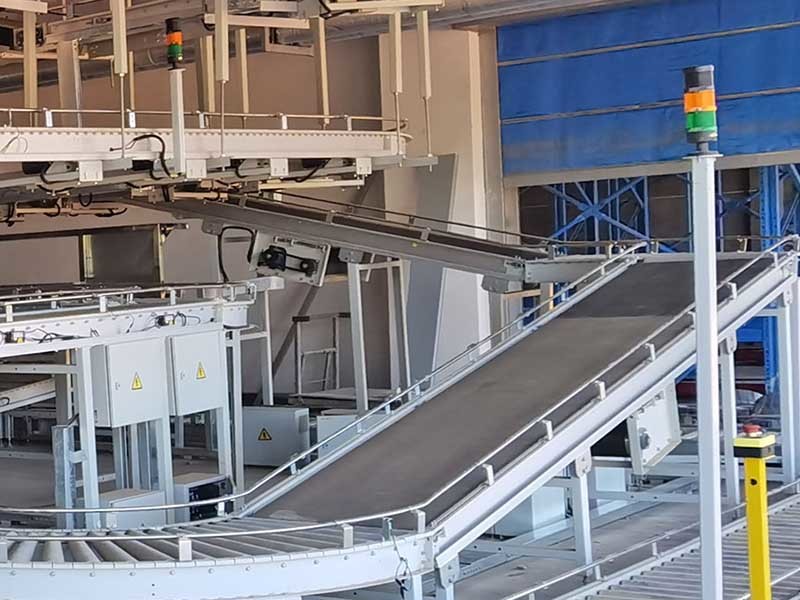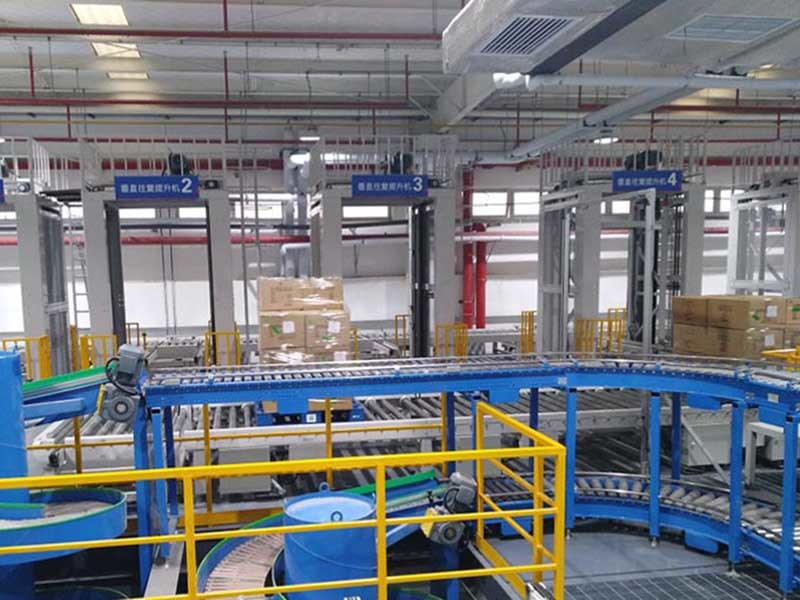Common conveyor equipment
Published:
2023-03
Conveyors responsible for continuous material delivery are common handling equipment in the logistics industry. Based on the various types and application scenarios of conveyors, let's take a look at the following methods:

Modern various types of conveyor structures are generally driven by electric motors to drive the transmission mechanism, and then drive the transmission media such as belts, rollers, and other movements, and then drive the upper materials such as bins or pallets to move forward. Due to its inability to accumulate and high friction, the belt conveyor is also suitable for use as a ramp lift.
01. Belt conveyor
Belt conveyor is a very common type of conveyor in storage and logistics centers. It has a simple and stable structure, can be continuously transported, and can be flexibly customized into various layouts based on the site and system. It is usually used to carry light load materials such as material boxes and packages. The belt conveyor does not have material accumulation and caching functions. As long as the belt conveyor is started, the material units located on the upper side all act together.
Belt conveyor is a friction driven machine that continuously transports materials. Using it, it is possible to form a material conveying process from the initial feeding point to the final discharge point on the conveying line. It can be used to transport both broken and bulk materials and finished goods. In addition to purely transporting materials, it can also be combined with the requirements of the technological processes in the production processes of various industrial enterprises to form a rhythmic flow line for transportation. Therefore, belt conveyors are widely used in various modern industrial enterprises.
02. Roller conveyor
Roller conveyor is a conveyor that uses several rollers erected on fixed supports at intervals to transport pieces of goods. The fixed bracket is generally composed of segments of several straight lines or curves that are assembled as needed. The roller conveyor can be used alone or in combination with other conveyors or working machinery on the assembly line. It has the advantages of simple structure, reliable operation, convenient installation and disassembly, depressed maintenance, and flexible line layout. Roller conveyors can transport items with a flat bottom, such as plates, rods, tubes, profiles, pallets, box containers, and various workpieces, along horizontal or small inclined angles. Also known as roller conveyors, roller conveyors are suitable for conveying items with flat bottoms. For non flat bottomed items and flexible items, they can be transported using pallets. It has the characteristics of large conveying capacity, fast speed, light and fast operation, and can realize multi variety collinear shunt conveying. What is outstanding is that it can better connect and support the production process, and has a variety of functions.
03. Chain conveyor
Chain conveyors are machines that transport goods using continuously moving endless chains that bypass several sprockets. Its structural principle is very similar to that of a belt conveyor. The main difference between them is that belt conveyors use conveyor belts to draw and carry goods, and rely on friction to drive and transmit traction; The chain conveyor is driven by a chain, using plates fixed to the chain to carry goods, and transmitting traction through coupling drive. Chain conveyor is a very common type of conveyor for transporting heavy goods such as pallets, requiring the bottom structure of the pallet and the transportation direction of the chain to be placed crosswise.
04. Tray lifting and transferring machine
Jacking and transferring machine is generally used to change the conveying direction of goods, and to send or remove goods from the main conveying line through the fork road. It has the characteristics of large bearing capacity, simple structure, stability and reliability.
05. Picking conveyor
Picking conveyor refers to the conveying equipment used to complete the sorting and transportation of products. The sorting conveyor is completed by a special chain plate and an embedded convex ball structure, which can complete high-speed sorting tasks.
06. Reciprocating Hoist
Reciprocating elevator, also known as elevator, is a kind of reciprocating conveying equipment among lifting equipment. The reciprocating elevator is driven by a chain, and the motor is controlled through frequency conversion and speed regulation to lift the car up and down in reciprocating motion. The lift car is equipped with a transmission mechanism to allow the conveyed material to automatically enter the lift car of the elevator.



